Team and mini project fair for interested visitors
Constance, July 2014. During the 6th Informatik Summer Camp (July 22-24, 2014), pupils visited the Ubiquitous Computing Laboratory. The main objective of the event is to offer more information about the STEM field (science, technology, engineering, and mathematics) but with special focus on Computer Science. Prof. Dr. Seepold welcomed the participants at the lab and he gave a short introduction into the lab activities.
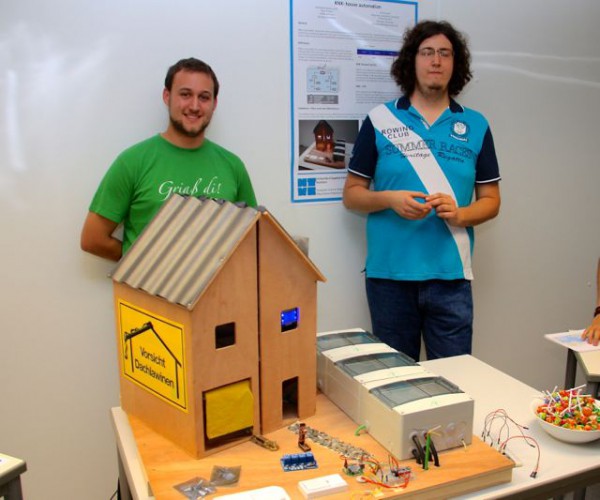
The Ubiquitous Computing Laboratory is one of the most specialized labs providing educational support for three different degrees: Applied Informatics (AIN), Automotive Information Technology (AIT) and the Master Informatics (MSI). One activity in all degrees mentioned is the programming project as part of a student’s regular study plan. Typically, this activity runs one semester for Bachelor students and two semesters for master students.
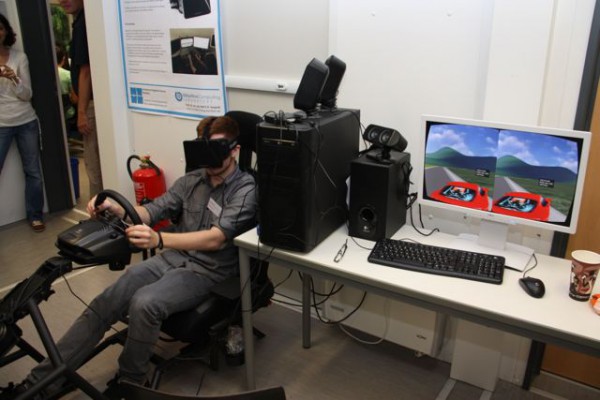
The participants of the Summer Camp were invited to attend a fair-like presentation of the students’ work. All results had been achieved in student projects and as part of the regular study plan. Prof. Dr. Seepold said that he would like to show what is a typical programming work and what are the results, a group of students can achieve within their projects. Each team has between three and seven members and the teams are not limited to one degree. When starting with the project, the students are at least in the 5th semester.
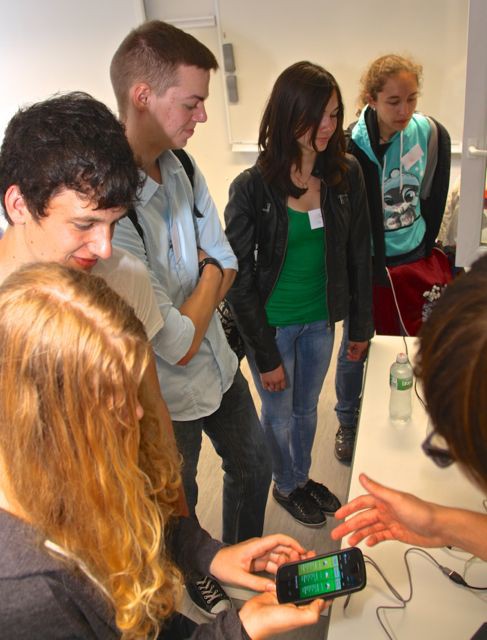
A selection of projects finishing in summer 2014 mounted a small exhibition stand to present the results and to demonstrate the working prototypes. The students and visitors started to discuss about the demonstrators and the techniques used to implement them. ‘We were impressed about the interest of the summer camp participants. The direct communication between our students and the summer camp members is a successful model, we proved already during the Girl’s Day this year.’, said Prof. Dr. Seepold.
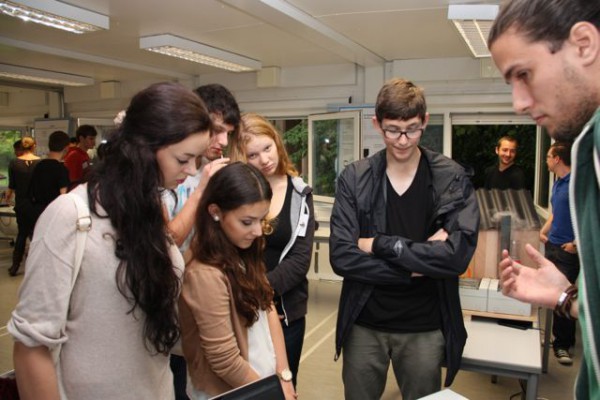
The following ubiquitous computing projects have been presented:
- Vcar demonstrator with Oculus Rift (Virtual Reality Headset connected to OpenDS)
- KNX demonstrator with a small model of a house
- KNX app to simulate a switch and to connect via Bluetooth
- System for alerting and forecasting elder persons with a sensors based architecture (smart app for Android)
- Self-build smart phone based on an Arduino Uno
- Step detection based on Arduino Uno
- Heart Rate Monitoring with a self-build sensor
- Friends finder (smartphone app)
- Taxi-sharing app (smartphone app)
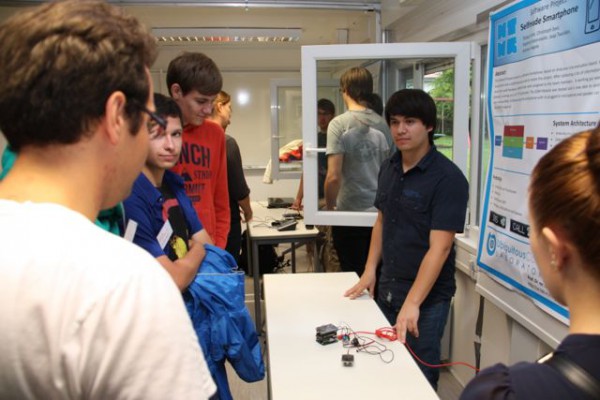 The self-made smart phone
The self-made smart phone
The small fair was coordinated and organized by Patrick Datko and Daniel Scherz both Master students at HTWG and members of the laboratory. Special thanks to the students who arranged to show their work while the exam period is still running. We hope that our guests appreciated their short stay at the laboratory and that they gained more insides into modern computer science applications.
Some more impressions:
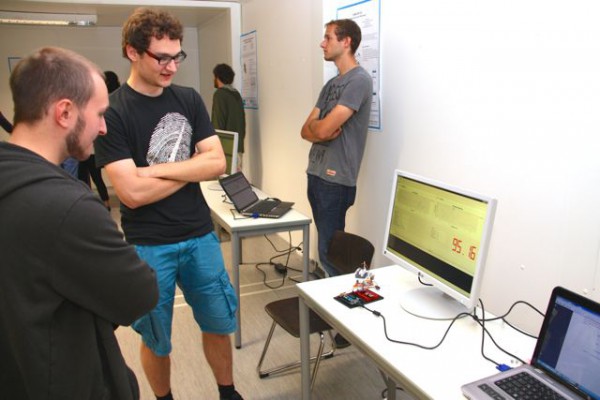
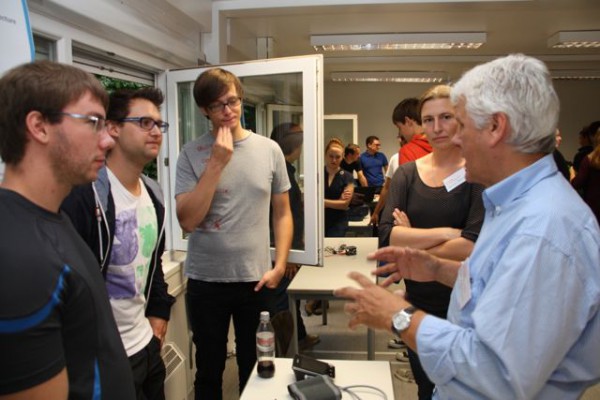 Advanced discussions
Advanced discussions 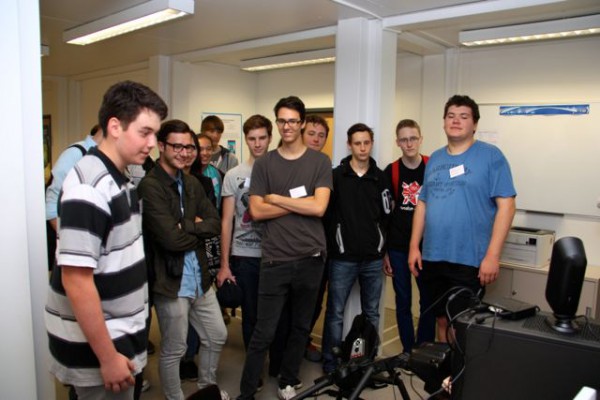 The queue for the VCar
The queue for the VCar 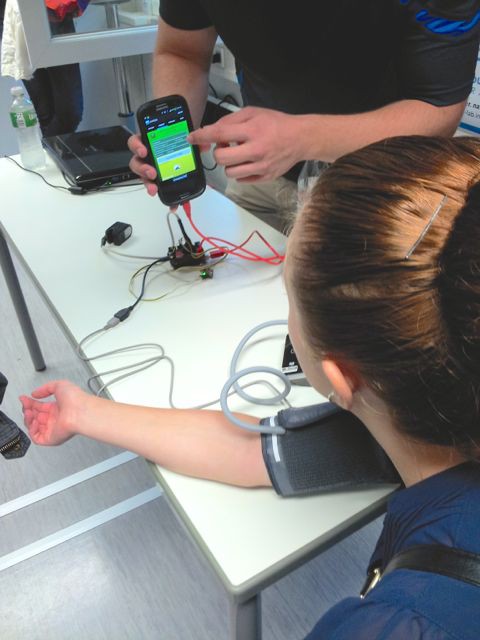 Automatic tension meatering
Automatic tension meatering 
